Biggin Hill: 'Mum was embarrassed about her WW2 medal'
- Published
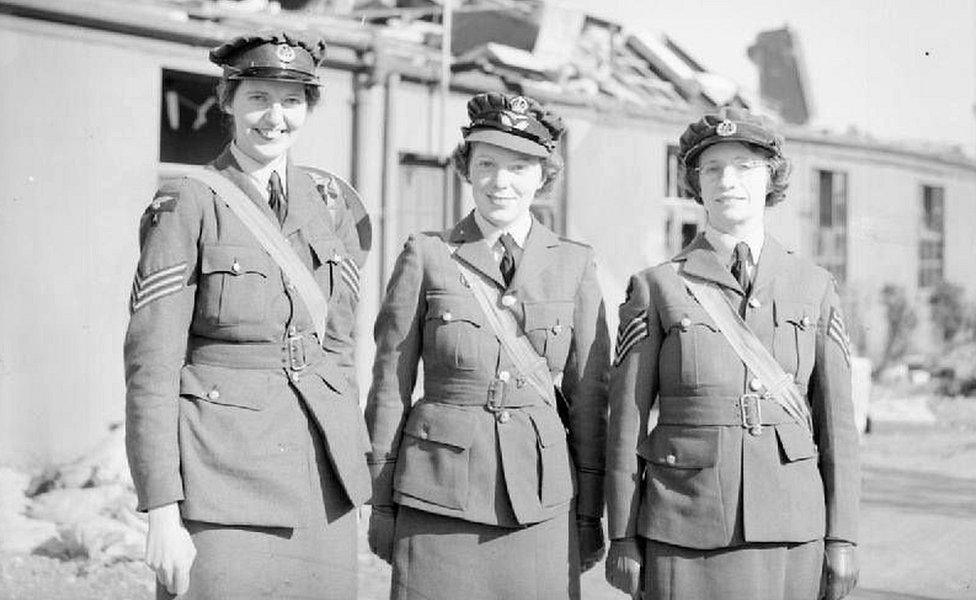
Sgt Joan E Mortimer, Cpl Elspeth Henderson and Sgt Helen Turner (l-r) were three of only six women in the entire WAAF to receive the Military Medal
Cpl Elspeth Henderson was among three female comrades to be awarded the Military Medal for bravery in the face of the enemy for their efforts during the Battle of Britain. Why was this honour questioned in some quarters, including by the airwoman herself?
As bombs pounded down on to the flimsy huts of Biggin Hill airfield on 30 August 1940, three women working there knew they had to act.
Cpl Elspeth Henderson, Sgt Helen Turner and Sgt Joan Elizabeth Mortimer were based at the south-east London fighter station at the height of the Battle of Britain.
That day they were on shift as teleprinter operators in the operations room. As the Luftwaffe began its attack, everyone was ordered to get out and take shelter.
Yet the three stayed at their posts, keen to protect their colleagues both on the ground and up in the sky.

Many WAAF members were based in operations rooms at RAF bases across the country
As bombs smashed through the building, Cpl Henderson stayed put, using the plotting table for protection as she waited for the broken telephone lines to be repaired.
Sgt Turner also kept working, while Sgt Mortimer relayed messages at the telephone switchboard before rushing outside with a set of red flags to mark where unexploded devices had fallen on the airfield.
The raid killed 39 that day. Each of the three women would be awarded the Military Medal for bravery in the face of the enemy, a move that was questioned in some quarters.
"It was controversial because Military Medals were viewed as men's medals," explains Heather Redfearn, Cpl Henderson's daughter.
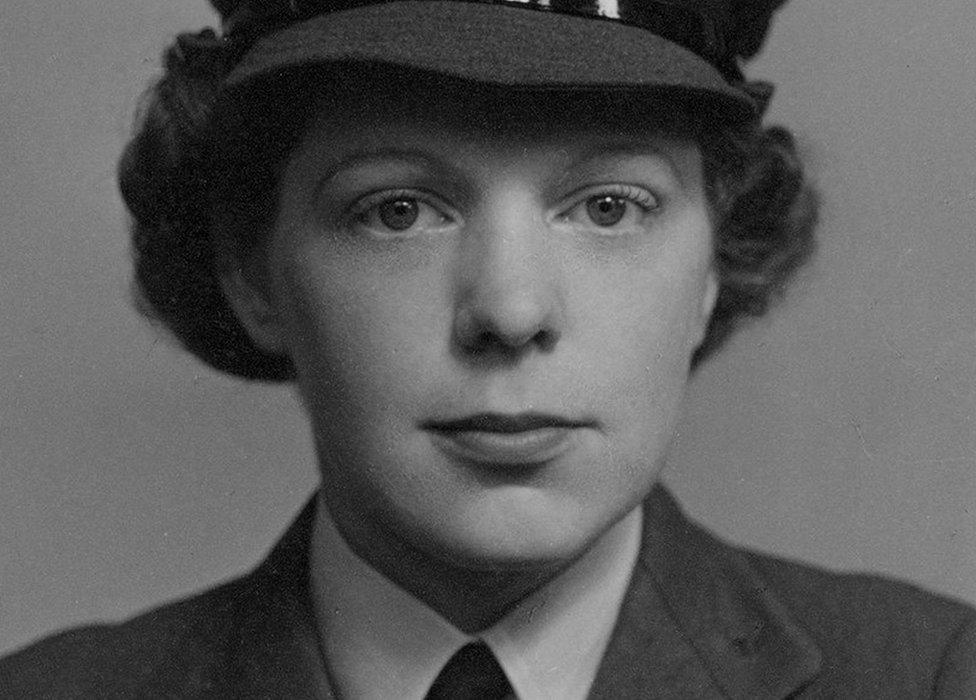
Cpl Henderson visited Buckingham Palace in March 1941 to receive her medal
The award also did not sit entirely comfortably with its recipient.
"She was embarrassed about it; she never talked about it very much," Mrs Redfearn says.
"The thing was," explains Mrs Redfearn's husband John, "while she was under the plotting table waiting in case the phones came back, outside you had the phone engineers repairing the phone line, so they're all outside during the air raid - and they're not getting Military Medals - and she's under the table waiting in case the phone lines came on.
"And she did.
"She was a little bit embarrassed about that, but there was no reason to be."

The Battle of Britain was fought between 10 July and 31 October 1940
Cpl Henderson spent six months working at the base as part of the Women's Auxiliary Air Force (WAAF). She had arrived in March 1940 having signed up the December before, following a realisation she had while at a family event.
"She attended her cousin's wedding and she felt that it was morally wrong that she, a single woman, should be continuing to enjoy civilian live while he, just married, taking on responsibility for a wife, was joining up - so she enlisted the following day," says Mrs Redfearn.
The lives and work of women like Cpl Henderson form the basis of a new exhibition at the Biggin Hill Memorial Museum.
At its peak, the WAAF had 182,000 members. They would carry out a huge range of activities to aid the war effort across the UK and beyond, from providing weather reports and deploying barrage balloons, to repairing aircraft and intercepting codes and ciphers.
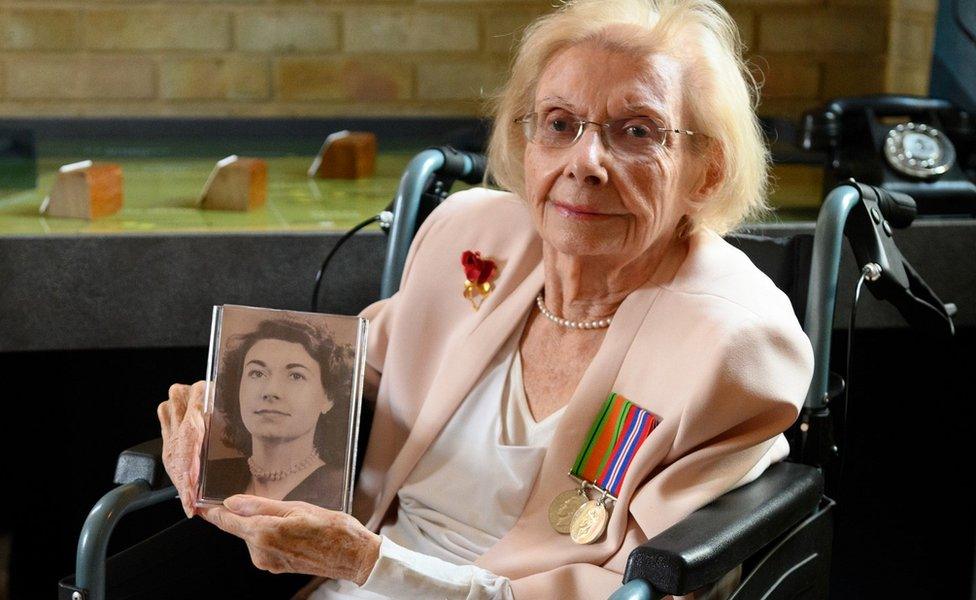
Ann Galley, who was born in 1923, joined the WAAF when she was 18 years old
In June 1941, 18-year-old Ann Galley arrived in England, where she was employed as a plotter. Her job was to track aircraft in the sky by moving markers around giant table maps.
By that time Biggin Hill had been flattened by German bombers, so operations had been moved just up the road to Keston.
"There were these lovely houses which had been requisitioned by the air force and all that was in them was a bathroom and an iron bed; there were no furnishings," the 99-year-old said.
The operations room where she worked was based in the local village hall. Later it was moved into the ballroom of a nearby mansion, where Ms Galley would spend eight-hour shifts plotting the movements of planes.
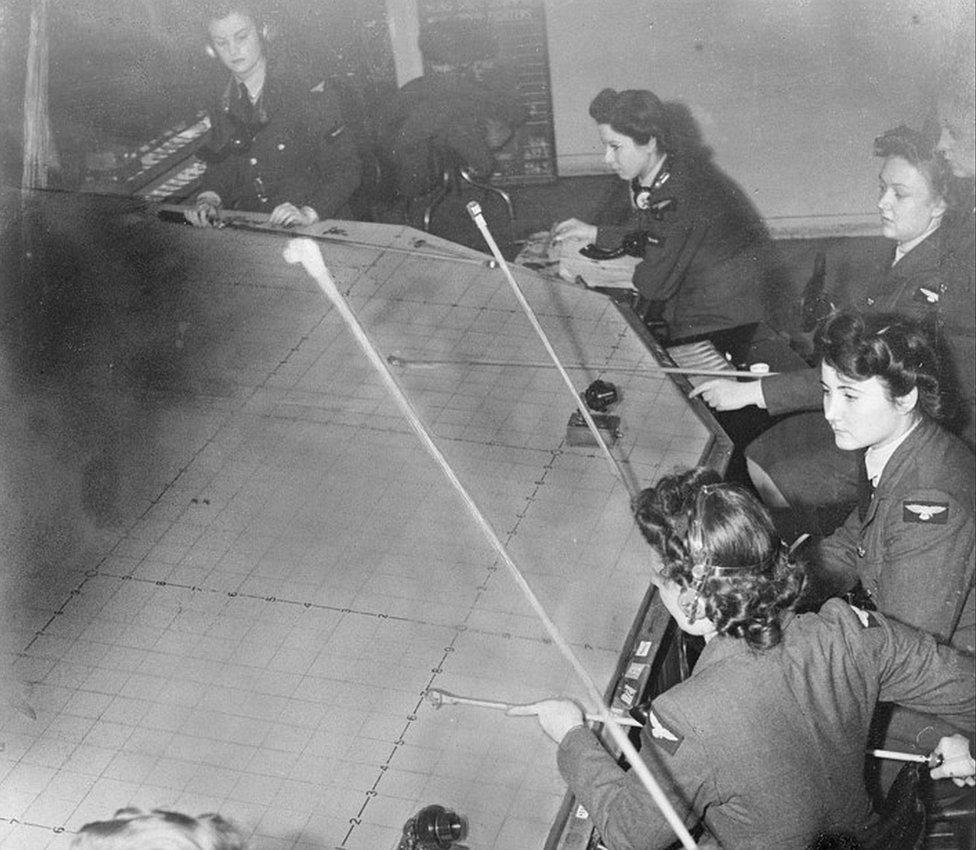
Plotters tracked planes in the air using markers on huge table maps
Keston would prove to be a safer place to work than Biggin Hill, but one evening Ms Galley watched as a huge squadron of German planes flew over them towards London.
"That night was the only night that I was really scared. I thought, 'this is it'," she said.
"We weren't underground, we were at ground level, and the noise and the terrific wind from the planes was quite scary."
As well as focusing on the work of those in the WAAF, the exhibition looks at the efforts of the women of the Air Transport Auxiliary (ATA).
The civilian unit was formed at the start of the war to fly new, repaired and damaged aircraft between factories, maintenance units and frontline squadrons.
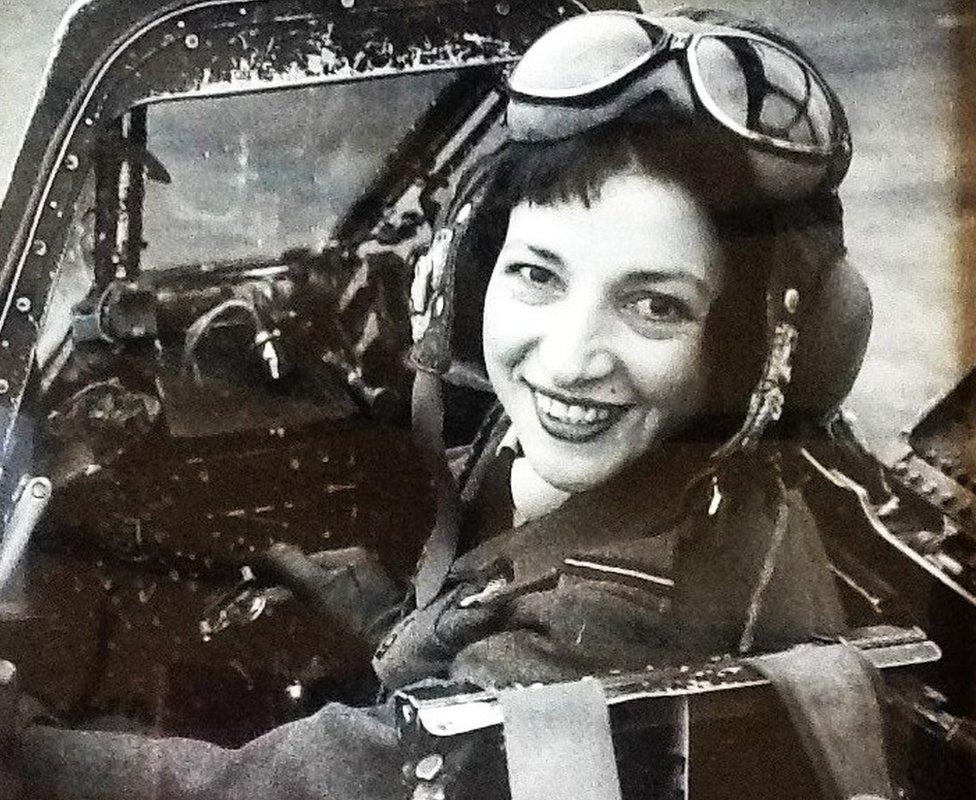
Jackie Moggridge, who was born in South Africa in 1922, became the youngest member of the ATA
Initially, only men were considered eligible for such work but as demand increased, women were allowed to join the unit, until, of the 1,250 recruits, 168 were female.
Jackie Moggridge had moved to the UK from South Africa to follow her dream of becoming a commercial pilot, but halfway through her aviation course, when she was aged 18, World War Two broke out.
"Her mum said, 'you've got to come home' and she said, 'no I'm going to fly, I've written to the RAF to offer my services to the war. I'm going to do my bit'," explains her daughter Candy Adkins.
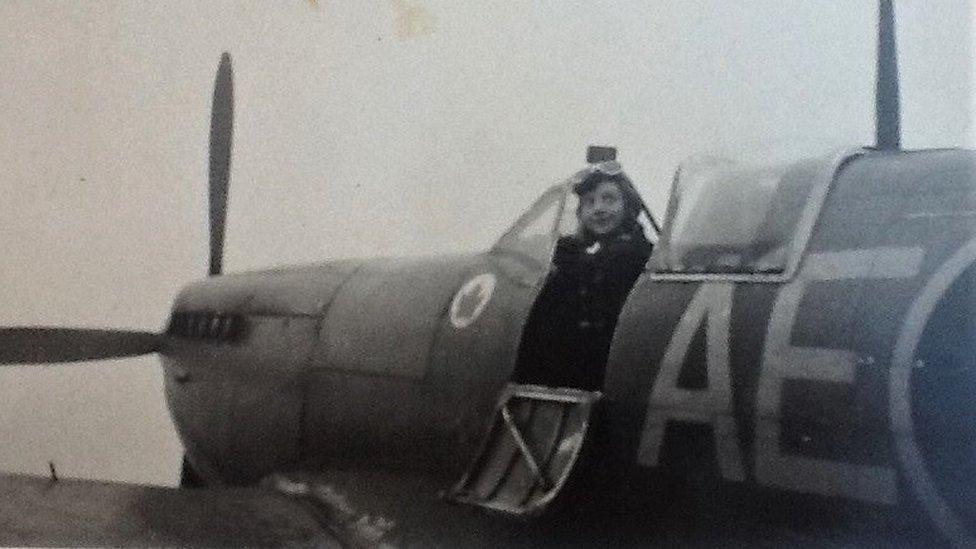
Ms Moggridge was said to be the first woman to do a parachute jump in South Africa, when she was aged 17
After being turned down by the RAF because of her sex, she joined the WAAF and was posted to a radar station.
"She'd describe how there would be little dots and they'd come together and then you watch… and then one disappears. You'd then wait with bated breath to see whether the little dot headed towards Germany and you'd know you'd lost one of your own.
"That's how she watched the Battle of Britain," says Ms Adkins.
With the ATA offering a chance for her to take to the skies, Ms Moggridge signed up to become the youngest member of the unit, taking planes including Spitfires, Hawker Hurricanes and de Havilland Mosquitoes across the UK, sometimes making five or six flights a day.
"She flew 83 types of warplane - they had 147 in all," Ms Adkins says, adding that the Spitfire was her mum's favourite, "because it was ladylike and so sensitive".
"She said it was the most amazing time, the best years of her life she described it, because it was so adventurous, exciting, living off the cuff, not knowing what you were going to do every day."
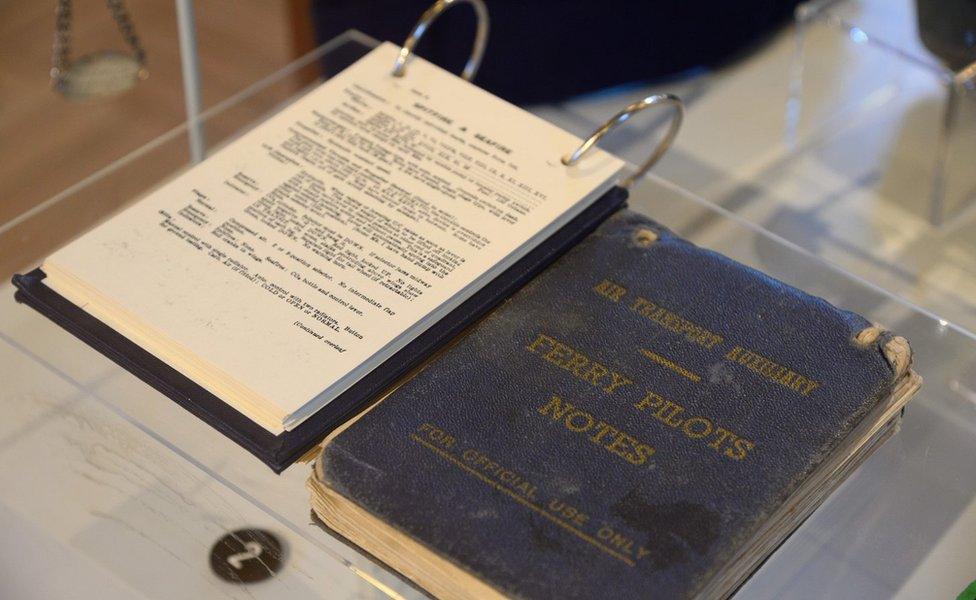
Members of the ATA were given pilots' notebooks to inform them about the various planes they flew
For many women in the ATA, the end of the war meant a return to being housewives, but Ms Moggridge pursued her flight career.
She joined the RAF's voluntary reserves and got to fly a Sabre jet, becoming one of the first women to break the sound barrier. In the mid-1950s she became the first British woman airline captain to fly passengers on scheduled flights.
Those onboard were kept in the dark about who was in charge of the plane.
"They wouldn't let her speak on the intercom because the passengers would be frightened if they heard a woman was flying them," says Ms Adkins.
While she had faced sexism throughout her career, receiving far lower pay than male colleagues doing the same job, Ms Adkins says her mother, who died in 2004, always wanted to pass on her can-do attitude to those around her.
"She brought us up to believe that anyone can do anything - you know, the sky's the limit. Well, I think she reached that and beyond."
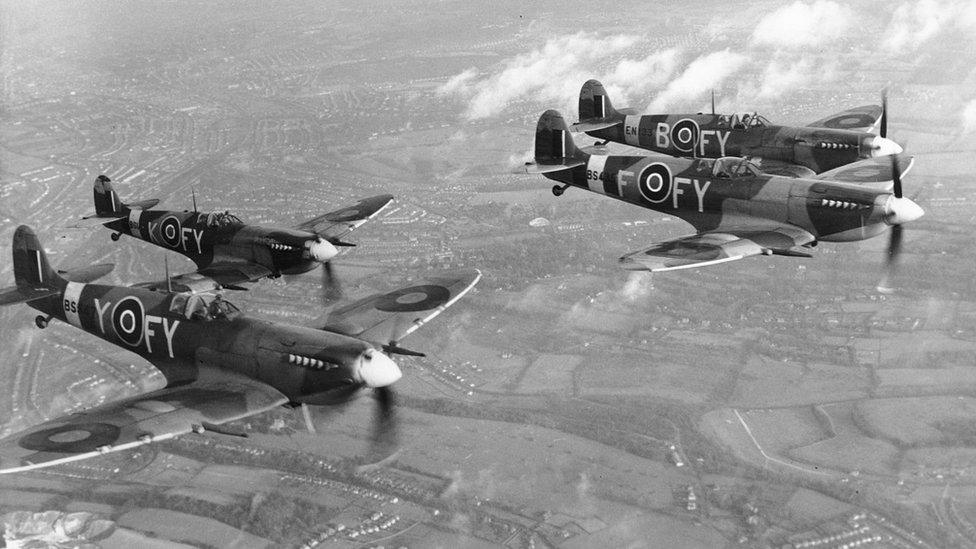
The Spitfire was Jackie Moggridge's favourite plane she flew during World War Two
It is such attitudes that the museum hopes to promote by holding its exhibition, while also shining a light on the hidden histories of some of the women who were part of the war effort.
"Obviously, people associate the Battle of Britain with the pilots and the heroic and amazing jobs that they did, but I thought here it would be really important to tell the stories of the ordinary women who just stepped up in extraordinary times," says director Katie Edwards.
"It's really interesting to tell that story and perhaps inspire some young women to just think about what you can do."
Women & War: Hidden Heroes of World War Two will run at the Biggin Hill Memorial Museum until late 2023.

Follow BBC London on Facebook, external, Twitter , externaland Instagram, external. Send your story ideas to hellobbclondon@bbc.co.uk, external
- Published24 February 2022

- Published2 January 2022
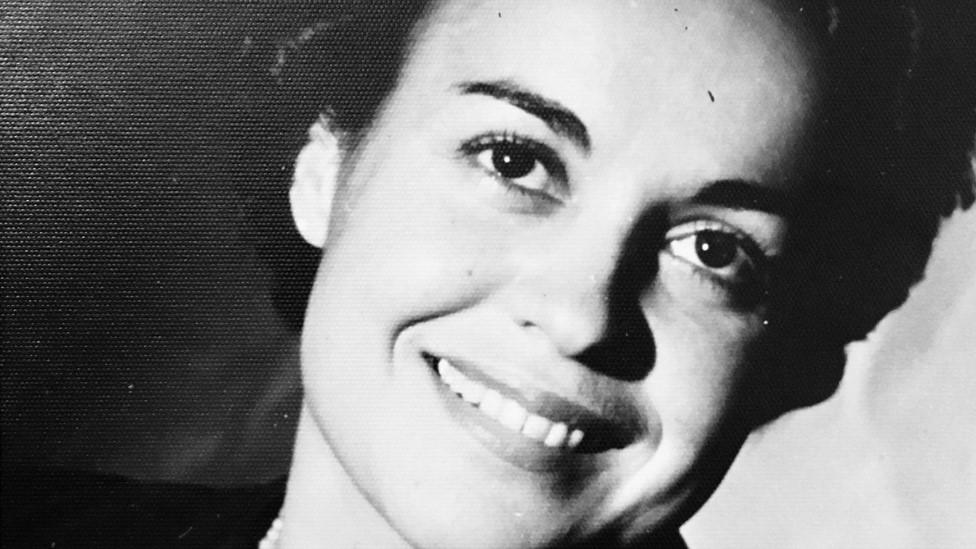
- Published28 April 2022
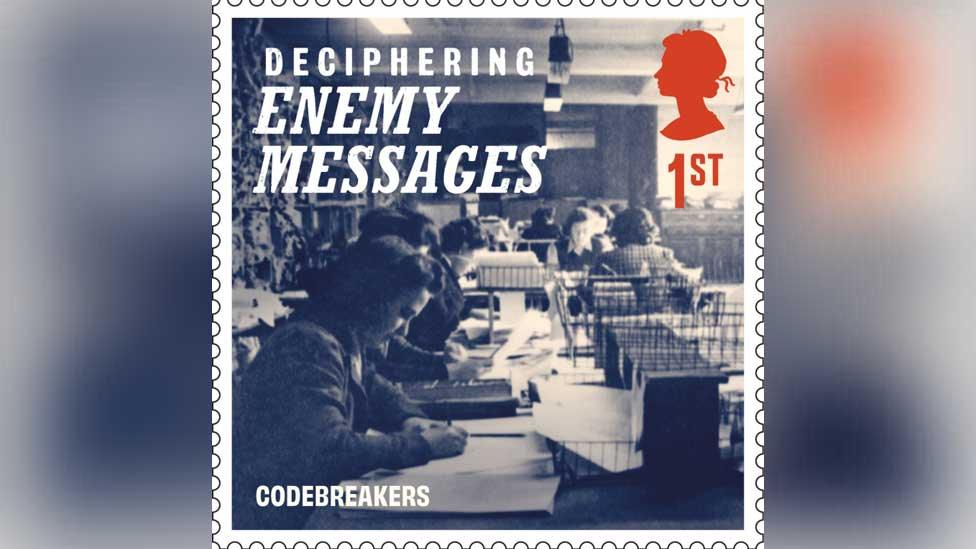
- Published3 May 2022
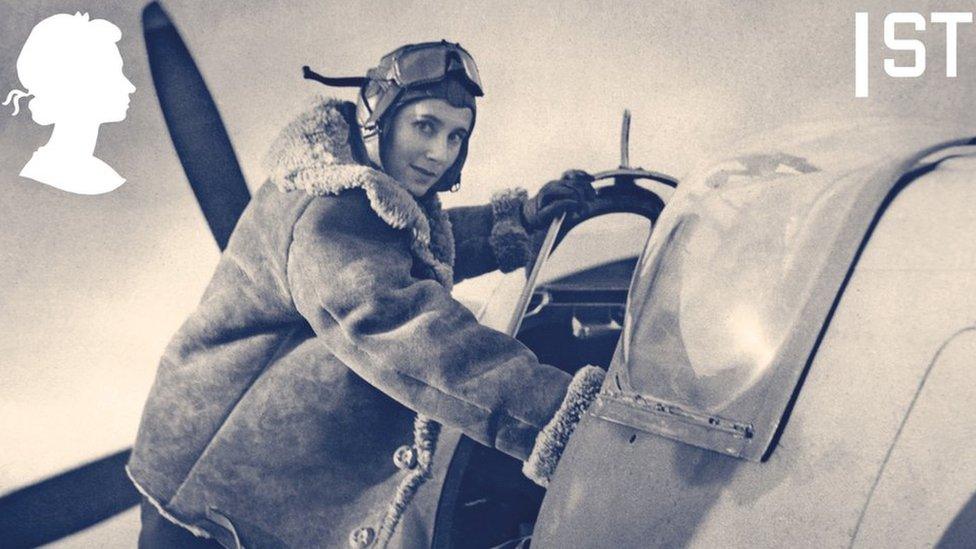
- Published11 May 2022

- Published8 January 2021
